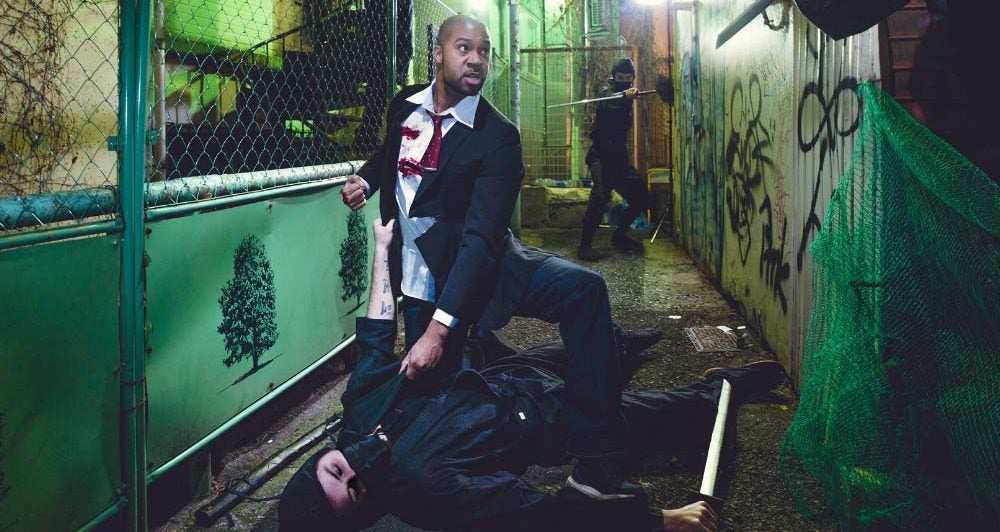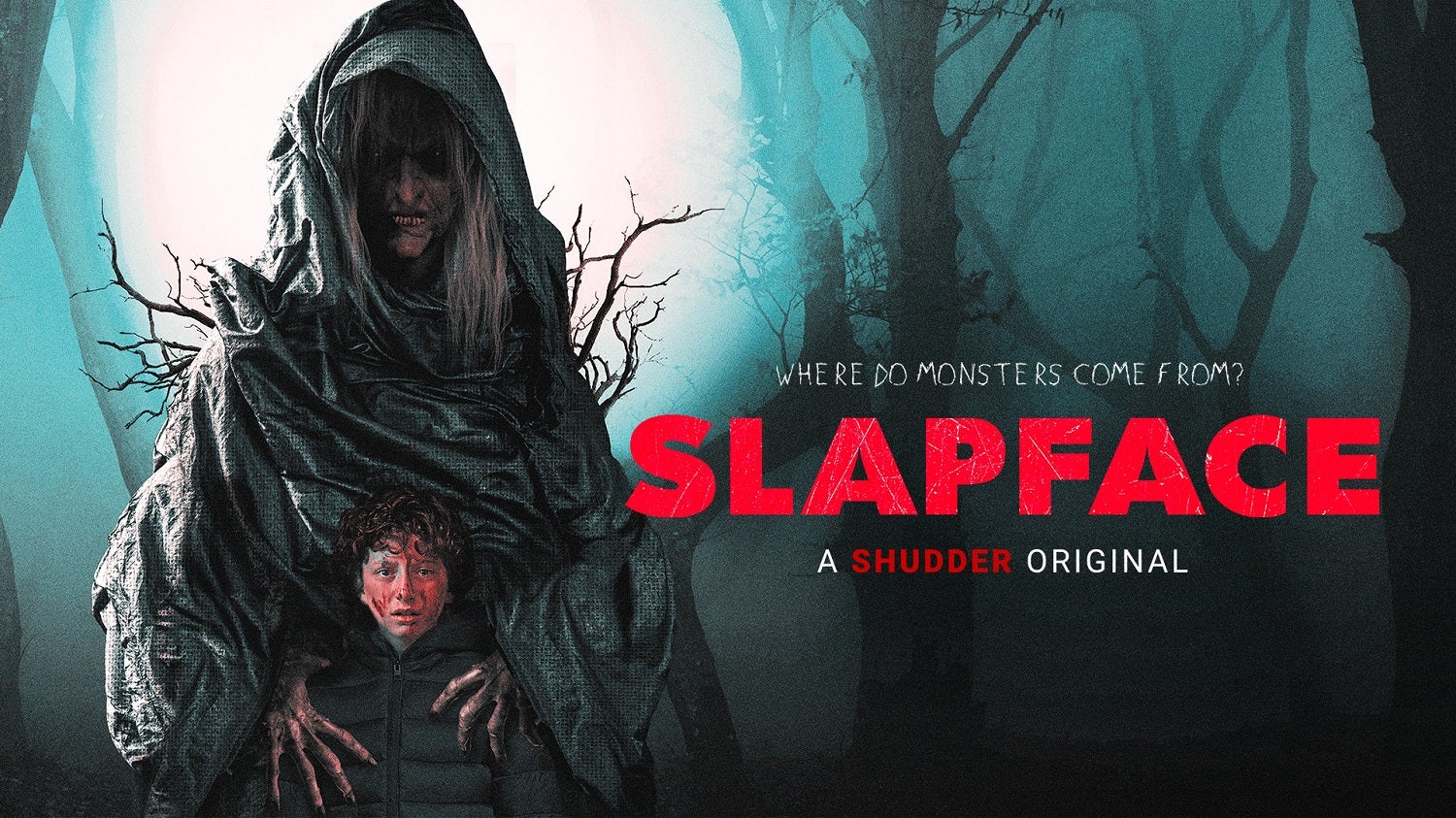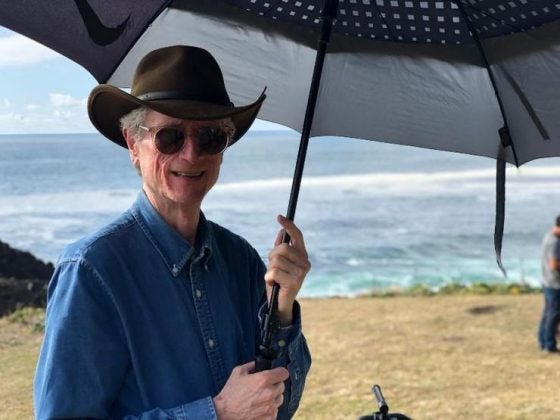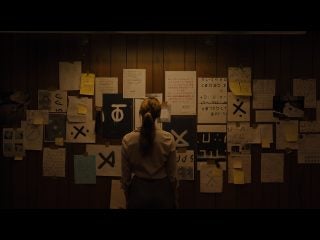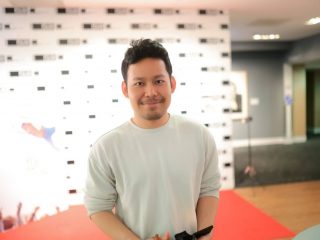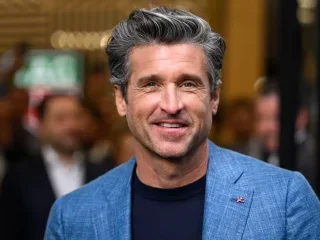Chuck Johnson was born on October 25, 1978, in Detroit, Michigan. He is known as an accomplished actor, stuntman, motion-capture artist, and most recently movie producer.
Every once in a while, you will hear about someone who lives their life on their terms. I always wanted to travel the world and live life to the fullest, and I knew there were people out there doing just that. Chuck Johnson is one of those people. Chuck has been living overseas for the past 24 years and has literally sailed around the world…twice! He is a professional stuntman, director, producer, and martial arts expert. Yes, you read that right; this man has been traveling the world as a stuntman and teaching martial arts. Here is the story about the time I met Chuck Johnson, Japan’s first black stuntman.
I have always dreamed of being like James Bond: living out of hotel rooms, jumping off buildings, racing fancy cars, and defeating my opponents with unmatched martial arts skills. Maybe I watched too many movies growing up or maybe it’s just the journalist in me, but I set out on a quest to find people like that. I came across Chuck Johnson when I first watched Fists of Absinthe. The film is an action-comedy about a Samurai-obsessed American who drinks Absinthe and travels back to medieval Japan to defend his sneakers from Ninja and Samurai…and Chuck was the one who wrote, produced, and starred in it.
Chuck’s story of how he ended up in that movie is even crazier than the movie itself. While working his way towards graduating Magna Cum Laude from Michigan State University, Chuck was simultaneously working towards a dream of going to the Olympics for Taekwondo… all while working 3 jobs, and selling the plasma in his blood to make ends meet. Bouncing back and forth to Asia for training via university study abroad programs, he not only developed a knack for foreign languages (he speaks both Korean and Japanese) he also ended up in Hong Kong. While attending the Intercollegiate Taekwondo championship there as a spectator, someone recognized him in the crowd from a Korean Taekwondo textbook in which he was featured. They told him that his division was short one fighter and asked him to compete. Which he did.. and he ended up winning the competition. It became such a spectacle that he made it into the news in Hong Kong. Leveraging that success and a few national Taekwondo champions he went on to win in the states, Chuck moved to Japan and became a bodyguard for visiting Hollywood and international celebrities, before eventually being cast in action films there himself.
I had a conference scheduled in Japan, and I knew this was going to be one of the few times I might possibly be able to meet Chuck if time permitted. Luckily, Chuck was available and gracious enough to make the most of the time he had to meet me. We scheduled a meeting at his Dojo in Tokyo and needless to say, I was very excited.
After arriving in Tokyo, I went straight to meet Chuck. On the way to his dojo, I was reading a station map, and a local Japanese person was kind enough to point me in the direction I needed to go. Before parting ways I mentioned that I was on my way to see Chuck, and showed the man a video clip of Chuck from his Instagram. The man immediately knew who he was and said, “Ah, yes. I saw that show. I’ve seen him on TV before.” Apparently, that’s not unusual for Chuck, who’s been in everything from TV commercials and television shows to dramatic films and some of Japan’s biggest international video games. Chuck told me that his dojo was in Roppongi, an area of Japan akin to Manhattan in NY, and as soon as I stepped out of the train station, I could believe it. Every other car seemed to be a Ferrari, Lamborghini, Bentley, or Porsche, and the air seemed to be thick with excitement and energy.
Finally, I had made it to the Quiet Flame Productions. Chuck teaches fight choreography (or “action” as they call it in Japan), stunts such as wirework, high falls, and traditional martial arts. It’s not uncommon for his students to study all of them under him. When I came in, Chuck was finishing up a private lesson with an actress, and the depth of his knowledge in all three worlds was just as impressive as his size and stature. Chuck towered over his student, but he taught with an almost child-like passion and kindness that could put anyone intimidated by his physical appearance at ease.
As soon as he finished teaching, he came over and shook my hand. He was cool and confident and had a certain look in his eye that said “I could beat you to a pulp… but don’t worry, I never would.” I knew of his competition record in martial arts, but looking around there wasn’t a single trophy in the room. I asked him why not, and he said that the dojo wasn’t about him or his past; it was about his students and their future. He went on to share his favorite Japanese expression with me: “A talented hawk always hides its talons”. He explained that it stemmed from the Japanese cultural concept of staying understated; because doing so is how you impress the people who really matter. “Sure, I could have a bunch of trophies along the walls; but the people I really want to teach aren’t the trophy hunters, it’s the knowledge seekers.”
We sat down on the mat and chatted. I was curious to know what motivated a person to open a martial arts school in Japan. “I was happy to be working as a bodyguard, and doing action films out here… but I had all of this rich and deep knowledge about martial arts (especially in Taekwondo) that I was not sharing with anyone. I wanted to pass on that knowledge and expertise to other people. I started a Youtube channel just to teach and share, and as that grew, eventually I realized I wanted to teach in person as well. I never advertised for this school, but it grew organically really, really quickly.” And quickly it had. The school went on to become one of the premier martial arts schools in Tokyo, now operating with 3 branches, and with people regularly coming from abroad to train with Chuck. Chuck didn’t stop there, he turned it into a hybrid school for stunt training as well.
Chuck commented, “I was booking so much work as a stunt person, that I actually needed more people for these jobs. So eventually, I started training stunt people just to have others on the roster. One of the things that I discovered was that when you train stunt people in real martial arts, you get better stunt people because of their discipline and focus; and if you train actors in martial arts (and stunts) their acting improves because their physicality becomes stronger and they have more confidence in their bodies and what they can do. So now, we train a full range of martial arts, stunts, and everything in between. We teach wirework, firearms, stunts, swordplay, everything.” I asked Chuck if they had to be a hardcore athlete to be able to do this stuff, and he said “No, not at all. And at least half of the people I train don’t come from an athletic background. It helps, but it certainly isn’t a necessity.” Then he said, “Come with me, I’ll prove it to you.”
He pulled out a mat and said “You are going to shoulder throw me. Then I’m going to throw you.” I thought “What in the world have I gotten myself into?” He took about 10 minutes to show me the mechanics of how I was supposed to move to “sell” the throw, breaking it down into simple-to-understand steps. Then he pointed out, “Don’t worry, you just have to sell the throw. As the stunt person I will throw myself”. And when we executed the technique he did just that. All I did was move along with him and WHAM! He crashed hard on the mat, and yelled and writhed in pain as if his back was broken. Then he cheerfully popped back up and said “See, it’s all technique. Your turn.” From there, Chuck showed me the mechanics of how to absorb impact across the body instead of in one spot, and then modified the technique we were doing so I wouldn’t have to go airborne the way he did. I was shocked that he did indeed throw me, but it didn’t actually hurt. So much in fact that he had to remind me: “Don’t forget to act. It’s the acting after the stunt that really sells it. The audience needs to believe that it hurts.”
Later, we went to a cafe to go grab some Ramen. I had not seen that much of Tokyo since landing and was excited to see some of the city. When we walked down the street, it became even more obvious that Chuck stuck out here. Here was a man who is a man who is 6’3”, and 200 lbs of muscle in a city where the average height for men is 5’ 6”, and the average woman is only 5’. But it was more than that; his aura took up more space than he did. I learned that in Japanese, the word for that is “motteiru”. It means “He’s got it.”
Over noodles, I asked Chuck how he ended up in stunts. Chuck answered, “When I first moved here, I was bodyguarding. I was speaking with a friend when an agent told me they wanted martial arts champions to play super soldiers in Godzilla: Final Wars. The casting had already closed by the time the agent submitted me, but the casting director asked to see me anyway, and I ended up getting in. When on set, I met the Japanese action director, Yuji Shimomura, and I asked if I could train with him. At the time, I didn’t speak a word of Japanese yet, and I knew next to nothing about Japanese culture and codes of conduct, so it was really challenging, but I stuck with it, and it just took off from there. I owe a lot to Shimomura-san because at the time I had no idea how big of a deal he and his stunt team was, but he took me under his wing anyway.”
I was amazed that Chuck had not only traveled the world, but had been discovered by a Hollywood bodyguarding service… and a major talent agency…a famous action director…just to name a few. Obviously, there is something about him that attracts big names. But it still wasn’t without hard work, determination, and lots of sacrifices. Chuck frequently was studying and improving, and he told me that for most of his career, he has never spent less than $500 a month on learning things. He went back to the United States to study at the International Stunt School in Seattle (where he is now also the fight choreography instructor), and at the time, he couldn’t afford to go, and his credit card was maxed out, so he got another credit card just to pay for it; but then the first job he got after graduating was a 1-year contract as a motion capture artist to play the soldiers for the video game Metal Gear Solid V. That job paid off both credit cards, and also gave him enough to go on to study with the Society of American Fight Directors, other Japanese Action Teams, and to fund more dramatic acting classes. It also started an acting career for Chuck in a relatively new medium; motion capture and animatronic puppeteering. To date, has been in 6 major international video games, playing multiple main characters in many of them; but still stresses his unwavering commitment to getting better every day.
Chuck also gave back. Over the years, he traveled the world as a peace activist and even volunteered at a Buddhist temple. I quickly learned that Chuck’s newest project was also in the act of giving. His latest film, Eastbound Traffic, is set to start shooting in the coming months. The fictional story deals with a very real-world issue: human trafficking. I asked Chuck what his inspiration for the film was. He told me about how early on in his career, he worked evenings in shady places where he saw women there that were brought in from Southeast Asia and Eastern Europe..and that as an American and English-speaker, he had the option to quit and do other work. For the women who were brought there however, that option didn’t exist. He said that Eastbound Traffic was about telling their stories.
The more Chuck talked about his experience, the more serious and passionate he got about the issue. Chuck said, “I really want to bring awareness of this issue to a broad audience because sex trafficking doesn’t just happen in Japan. It’s happening everywhere.” Eastbound Traffic is a story told through the lens of action because action is what I know best; but even though the story is fictional, the things that happen to the characters in the story are all based in reality. It brings attention to the social issues of human trafficking and the psychological trauma that goes with it. When I worked at that club, I noticed some of the women coming in with bruises and some would even just disappear. This is the best way that I know to make a difference and it is something I am extremely passionate about. If we can make a great action movie and also make a difference, well…that’s what it’s all about.”
With that, we wrapped up our dinner and my time with Chuck Johnson. Not only was he a world traveler, and truly a man with swagger, but he also had a huge heart. He lives his life fearlessly and truly works to create a better world for people to live in. In the end, I learned that Chuck had not lived his life with the goal of traveling. He lived it with the goal of growing, improving, and changing the world for the better; wherever that took him. I learned that this real-life James Bond wasn’t about being cool; he was just about being himself.




